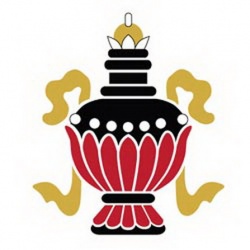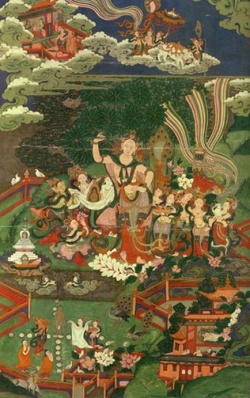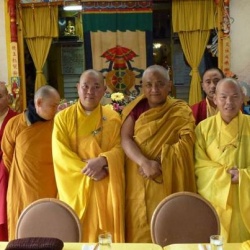The Five Vayus
Through their exploration of the body and breath, the ancient yogis discovered that prana (life force energy) could be further subdivided into energetic components they called Vayus (winds).
The five Vayus of prana all have very subtle yet distinct energetic qualities, including specific functions and directions of flow.
The yogis were able to control and cultivate these Vayus by simply bringing their focus and awareness to them.
Through this conscious control and cultivation they were not only able to create optimal health and well-being, but were able to activate the primordial Kundalini energy to obtain states of enlightened Samadhi.
Complete mastery over the Vayus is not necessary to benefit from using them to improve our inward focus and the ability to feel the subtleties within the body.
Cultivating a basic awareness of one or more of the Vayus will help us deepen our awareness of body and breath to enrich our yoga practice.
The two most important Vayus are Prana-Vayu and Apana-Vayu.
Prana–Vayu is situated in the head, centered in the third-eye, and its energy pervades the chest region. The flow of Prana-Vayu is inwards and upward.
It nourishes the brain and the eyes and governs reception of all things: food, air, senses, and thoughts.
This Vayu is the fundamental energy in the body and directs and feeds into the four other Vayus.
To experience Prana-Vayu: Close your eyes, sit or stand with a long spine and relaxed body, and as you inhale feel an energy flowing up the torso from the belly to the third-eye.
Apana–Vayu is situated in the pelvic floor and its energy pervades the lower abdomen.
The flow of Apana Vayu is downwards and out and its energy nourishes the organs of digestion, reproduction and elimination.
Apana-Vayu governs the elimination of all substances from the body:
carbon monoxide, urine, stool, etc.
To experience Apana-Vayu: Close your eyes, sit or stand with a long spine and relaxed body, and as you exhale feel an energy flowing down the torso from the top of the head to the tailbone.
Vyana–Vayu is situated in the heart and lungs and flows throughout the entire body. The flow of [[Vyana-Vayu] moves from the center of the body to the periphery.
It governs circulation of all substances throughout the body, and assists the other Vayus with their functions.
To experience Vyana Vayu: Close your eyes, sit or stand with a long spine and relaxed body, and as you inhale feel the breath radiating outward from the navel to the arms and legs.
Udana–Vayu is situated in the throat and it has a circular flow around the neck and head. It functions to “hold us up” and governs speech, self-expression and growth.
To experience Udana-Vayu: Close your eyes, sit or stand with a long spine and relaxed body, and as you inhale and exhale feel the breath circulating around and through the head and neck.
Samana–Vayu is situated in the abdomen with its energy centered in the navel.
The flow of Samana-Vayu moves from the periphery of the body to the center. It governs the digestion and assimilation of all substances: food, air, experiences, emotions and thoughts.
Close your eyes, sit or stand with a long spine and relaxed body, and as you inhale and exhale feel the breath rising and falling in the front, sides and back of the torso.
Awareness of one or more Vayu has several applications in yoga, and is most easily illustrated within a yoga posture. The awareness of Prana Vayu creates a focus to lift, lengthen and open the upper body.
The awareness of Apana-Vayu creates a focus to ground and stabilize the lower body.
The awareness of Vyana-Vayu creates a focus of strength and fluid movement body.
The awareness of Udana-Vayu creates a focus to maintain a long spine and a correct posture.
The awareness of Samana-Vayu creates a focus to open and relax the body.




